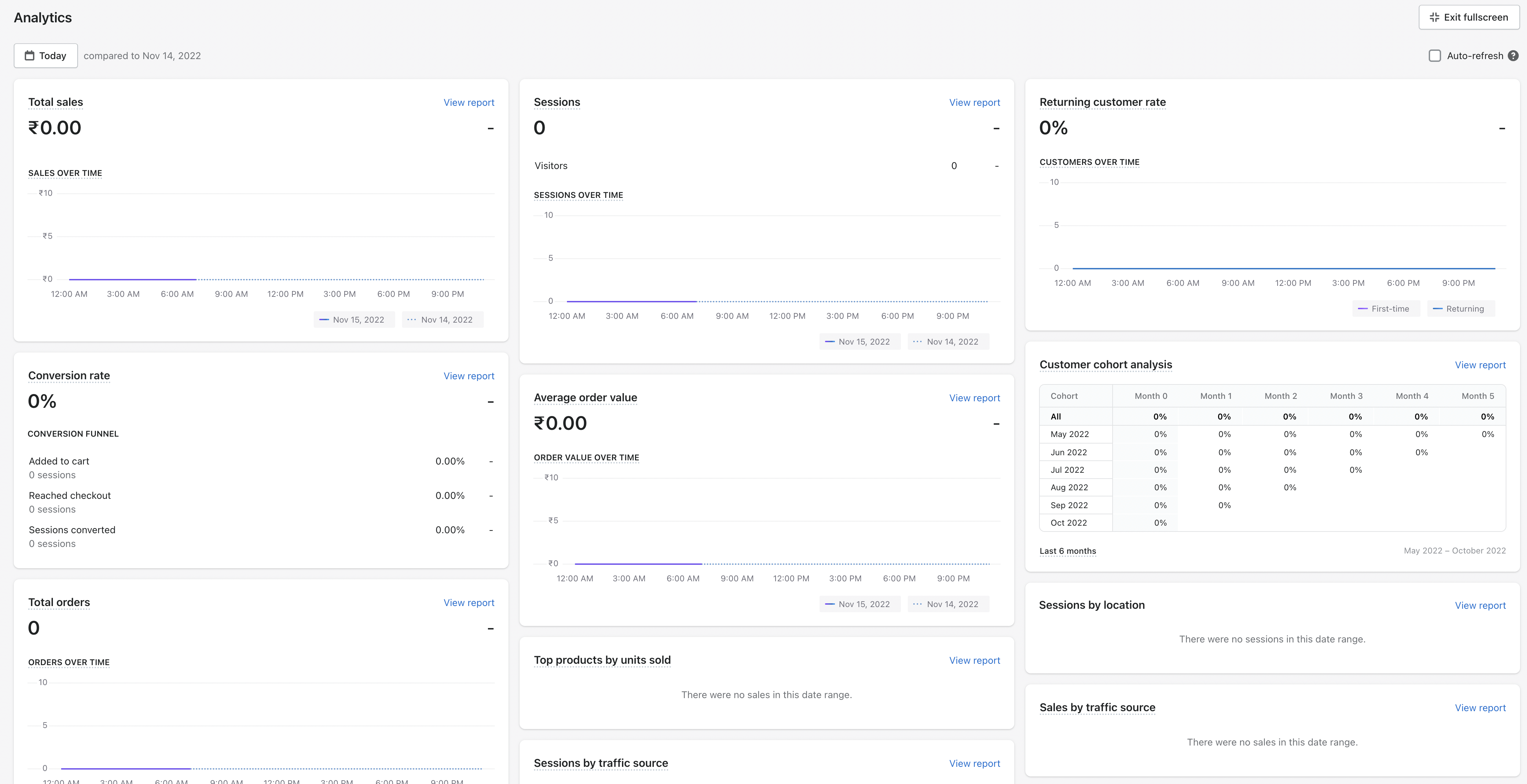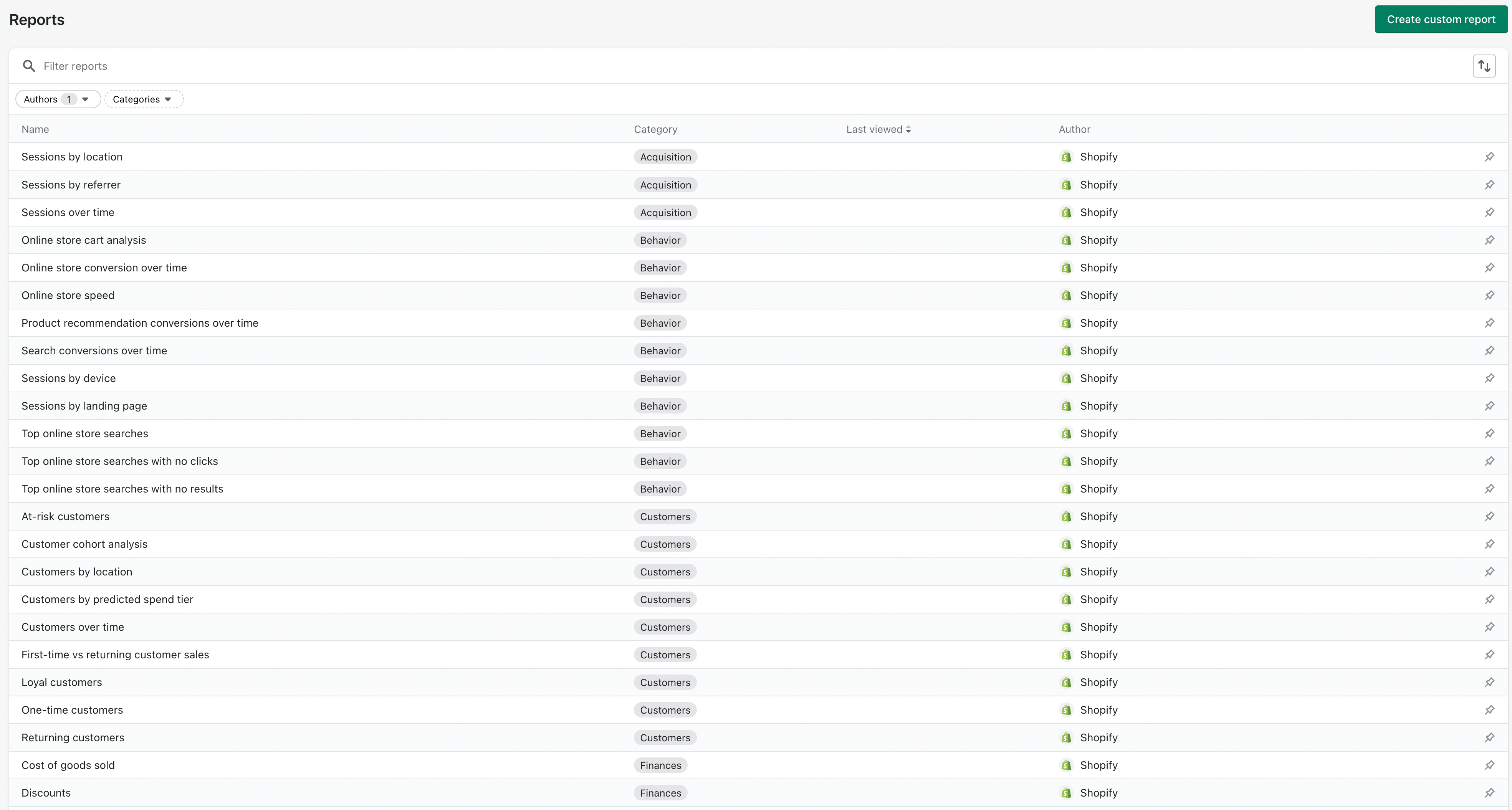Discrepancy between Shopify Analytics and Google Analytics
It's a little confusing when the data you receive from Shopify and Google Analytics about your Shopify store is different. Which one is a better source of truth? It may be time to start comparing Shopify Analytics vs Google Analytics to see which is more accurate and reliable.
When comparing Shopify analytics vs Google analytics, it’s Google that comes out on top. Across the board, Google Analytics offers a depth of detail that Shopify doesn’t match on any front. Below are the advantages of Goggle analytics which you dont get with Shopify Analytics.
Comparing Shopify Analytics vs Google Analytics: An In-Depth Look
While many assume that Shopify analytics is all you need to analyze user-interaction with your Shopify store, this isn’t actually the case.
Google analytics provides an even more in-depth look at how users are finding, using, and leaving your store! It’s a good idea to weigh up the differences both platforms offer, and begin comparing Shopify Analytics vs Google Analytics.
How to use Shopify Analytics
Shopify is one of the world’s leading e-commerce platforms. More and more people are using their services every day, including their analytics. But what is actually monitored by Shopify analytics, and is Google Analytics superior?
Let’s take a look below at the metrics you can track on Shopify.
What Are The Metrics You Can Track On Shopify?
1. Dashboards
The dashboard itself is not a metric, but a display of the most important metrics tracking visitor behavior.

This data is presented numerically and also in graph form. The data available for viewing through the dashboard includes:
- Overall sales: The revenue generated so far through selling merchandise
- Sessions: How many times visitors have explored your store, and what they did while they were there
- The rate at which customers return: Given as a percentage
- Conversion rate: This is the percentage of sessions that resulted in orders , out of the total number of sessions.
- Average order value: Total value of all orders divided by the total number of orders.
- Customer Cohort Analysis: This is really useful and shows the amount of customers that returned to your Shopify store over time and made repeat purchases.
- There are also more reports regarding total orders, total products by unit sold, sessions by location, sessions by traffic source, sessions by device type, sessions by social source, top landing pages by sessions, top referrers by session - and sales attributed to marketing.
2. Reports
Shopify reports can only be viewed by those with the Basic Shopify plan or better.

They detail your inventory, finances (i.e. taxes, incoming and outgoing payments), visitor behavior, marketing statistics, and sales. They’re a useful tool to tracking activity in your store, but are not the be-all and end-all of e-commerce analytics.
Also, the fact that many are only available on more expensive plans is a downside.
Live View
With Live View, you can see what’s happening in your store right now!

Shopify’s Live View tool is useful to observe in real-time how many visitors you have, and what they’re doing.
Problems with Shopify reports
Although there are many more metrics available on Shopify reports, their usefulness is questionable especially when compared to Google Analytics. Google knows more about who is visiting your store, how they reached there, how long they used your store, what they did and what they did after they left your store.
We can’t always rely on Shopify analytics for accurate and useful presentation of data, as you’ll read about below.
Why You Can't Rely Solely On Shopify Analytics
Shopify analytics cannot be solely relied upon for the following reasons:
- They are bound by the platform: What happens if, later on down the track, you want to switch from Shopify to another e-commerce platform? You will lose all your analytic data! For those who are using Google analytics from the start, this won’t be a problem.
- Available data is plan-specific: Certain reports are only accessible if you subscribe to the higher-end plans. For anyone looking for cheap analytics, Shopify’s aren’t the most detailed or affordable.
- No cross-domain tracking: Unlike Google, Shopify analytics does not offer cross-domain tracking, meaning the data of two related domains cannot be compared. If you’re running multiple websites that link back to each other, this aspect of Shopify analytics could be a big downside.
The benefits of Google Analytics over Shopify Analytics
When comparing Shopify vs Google analytics, Google tends to come out on top in most areas.
The main point of difference between Shopify and Google is the sheer amount of metrics that they track – so let’s take a look at all the things Google can do that Shopify can’t.
What Are The Metrics You Can Track On Google Analytics That’s Not On Shopify?
1. Lifetime Value (LTV)
A crucial metric for online retailers to track is the Lifetime Value, or LTV, of their users. See how much someone has given to your company, and through what channels. Use this data to adjust your marketing strategy -– target your most valuable customers!
2. Track Total Sessions vs. Unique Sessions
Total sessions are the amount of times a user has accessed your site and browsed, for however long. Unique sessions, more often referred to as unique pageviews, show how many times a particular page has been accessed, and by who. These sessions will allow you to see which of your pages are the most popular and/or successful, and which ones need more work!
3. More In-Depth Real-Time Reporting
Shopify analytics offers you a live view, but you can only track four metrics in it: Visitors, sessions, shopping cart activity, and daily sales totals.
Google analytics offers substantially more, including:
- Specific pages being accessed right now/real-time
- The percentage of users active on said pages
- Time comparisons between direct vs. organic visitors
- Referring keywords
- The amount of set Google Analytics goals being completed real-time
- Conversions
4. Seamless Integration With Other Marketing Tools
You’re really missing out if you only use Google Analytics on its own. It has the ability to seamlessly integrate with other marketing tools such as:
- Google Ads: Monitor the success of your ad campaigns with Google analytics – something Shopify can’t do
- Google Search Console: With Google analytics, you can analyze where the Search robot is having trouble crawling or indexing your pages.
You’re also able to view search traffic and what keywords bring users to your store
- Third party applications: Google Analytics is able to integrate seamlessly with a huge number of third party marketing tools – whichever is your preferred platform, it is likely that Google analytics can help track it
5. Assess Your True Shopify store Conversion Rate
While Shopify analytics can also track conversion rates, Google calculates the rate based on a much larger set of variables. This means that with Google analytics, you can assess your true conversion rate.
6. Set Ecommerce Goals
In Google Analytics, you can set ecommerce goals. These might be the signing of a form or the purchase of a product. Google Analytics monitors these in real-time and can notify you if you want, which is useful for seeing how your store performs on a daily basis!
7. Benefit From Enhanced eCommerce Tracking
Where Google Analytics really outshines Shopify is in the area of customer monitoring. Everything from cart abandonment and bounce rate, to overall customer behavior throughout the purchasing process can be tracked.
The information given here will help you to optimize your store based on the behavior of your most profitable customers. Google analytics really does offer tremendous and valuable insight that Shopify can’t compete with!
Wrapping Up: Shopify vs Google Analytics?
If you want a state-of-the-art data-tracking system, put your trust in Google Analytics and maximize your online profits for your store today!